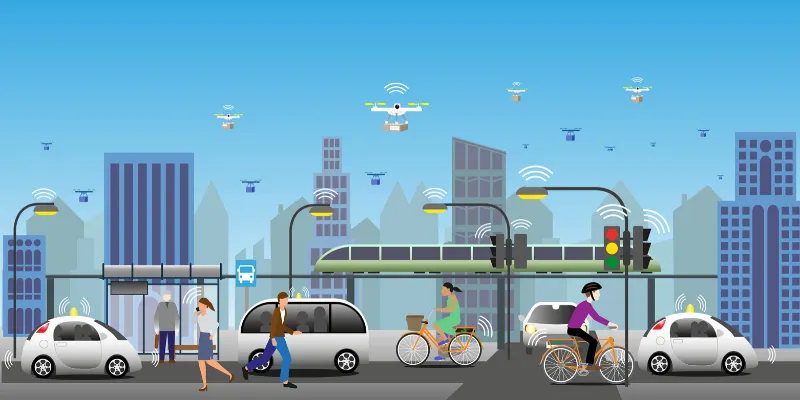[Matrix Moments] redBus CEO Prakash Sangam on the new normal in the travel and transport sector
In this episode of Matrix Moments, Tarun Davda, Managing Director at Matrix Partners India and Prakash Sangam, the CEO of redBus, talk about the COVID-19 recovery patterns and changing consumer behaviour, learning from redBus' journey, and takeaways from his personal experience as a leader.
It is no secret that the coronavirus pandemic has adversely impacted the travel and transportation segment. In a discussion moderated by Matrix Partners India Managing Director Tarun Davda, redBus CEO Prakash Sangam spoke about the path to recovery and what will it take for the transport sector to operate in the new normal.
“There has been a clear recovery in demand, in the number of transactions, as well as the daily travel that we're witnessing over the last three weeks or so. One of the fundamental reasons why the recovery has been slow is because three large states — Maharashtra, Madhya Pradesh, and Kerala — accounted for about 42 percent of our pre-COVID-19 numbers,” says Prakash.
At present, these three states haven’t resumed any kind of travel, thus Prakash says that what would have accounted for 42 percent of the company’s revenue is now down to zero. He explains that the other states have indeed allowed travel to happen.
“If one state in the middle is not allowing free movement of vehicles, then that causes a hindrance. So the number of operational routes are lower. The central government has released a whole bunch of unlock guidelines, and while most of them do call for unhindered movement of both goods and people, different states have chosen to tighten those regulations,” he adds.
Each state has different requirements in terms of pre-approval for travel. This, in turn, is causing uncertainty and further suppressing the demand.

The reverse migration trend
“Having said that, over the last two to three weeks, we are seeing a reversal of the trend. Things are picking up. Traffic has come back. Conversion rates are improving. We are seeing travel happening now. This has coincided with a couple of festivals that happened — like Raksha Bandhan and Eid — that I think triggered it,” adds Prakash.
He also believes that the drive could also be because of migration, with people returning to the cities from their hometowns. Thus, there is increased movement from Tier-II and III towns into metro cities.
“This is good news because that indicates that economic activity is going to pick up. I think the economic engine is all interconnected. If one part of the economy starts, there are cascading effects and different parts start firing at different times,” says Prakash.
Other behavioural changes also need to be taken into account. Prakash says that there is a significant shift in the travel happening between the top seven or eight metros. They contributed to about 10 percent of redBus' sales pre-COVID-19.

Tarun Davda, and Prakash Sangam
Consumer behaviour shift
“Given that these are the most impacted by COVID-19, that number is down to about 1.5 percent. So that is where the demand has been hit. Now, if you further expand it to at about 41 cities, which have more than a million-plus people living in each of them, the travel happening within these cities was 25 percent of the pre-COVID-19 levels, and 75 percent with street travel to or from the smaller towns. So 25-75, that has become now 10-90. So 90 percent of travel is actually now originating or terminating in smaller towns,” explains Prakash.
Thus, the percentage of transactions that come to redBus from new customers has nearly doubled, which means that a lot of those customers who were earlier probably more comfortable just booking offline, are making bookings online.
On the supply side, especially with larger road transport corporations in the country which hold a large amount of inventory, only a fraction of that was initially available for online booking. Now, that is significantly more.
“Everybody's looking for online ticketing, going contactless. So we are seeing that the inventory addition also is going up with the supply side. So these are some really good signs on the migration routes that I talked about. Buses originating from towns like Azamgarh, Varanasi, Gorakhpur, Muzaffarnagar, and Patna, all of them are going to Delhi. The occupancy is nearly 100 percent. This is because people are making one-way trips. So the one-way travel has gone up,” says Prakash.
Listen to the podcast here.
Edited by Kanishk Singh


![[Matrix Moments] redBus CEO Prakash Sangam on the new normal in the travel and transport sector](https://images.yourstory.com/cs/2/a9efa9c02dd911e9adc52d913c55075e/Imagezgp4-1599215893123.jpg?mode=crop&crop=faces&ar=2%3A1&format=auto&w=1920&q=75)
![[Matrix Moments] What are moats and why do they matter for any startup](https://images.yourstory.com/cs/2/a09f22505c6411ea9c48a10bad99c62f/Image5h17-1598615524254.jpg?fm=png&auto=format&h=100&w=100&crop=entropy&fit=crop)
![[Matrix Moments] Fintech: A look back at the first six months of 2020](https://images.yourstory.com/cs/2/a9efa9c02dd911e9adc52d913c55075e/FintechPreandPostCovid-02-1596804981895.png?fm=png&auto=format&h=100&w=100&crop=entropy&fit=crop)




